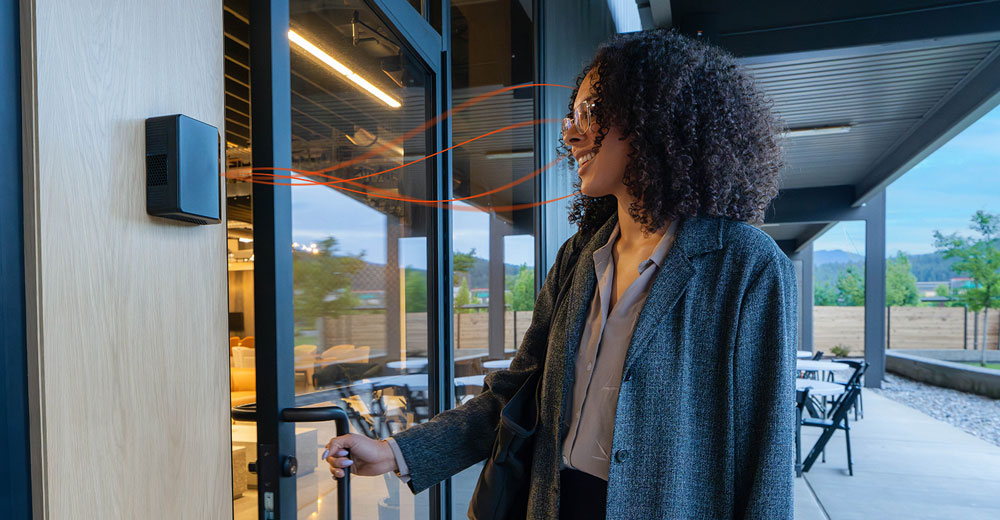Workplace safety is an increasing concern in modern environments. Advances in artificial intelligence (AI) and machine learning (ML) are driving innovative hardware solutions to reduce the risk of unauthorized access.
Managing any facility or organizational team now involves greater responsibility for safety, whether in workplaces, campuses, hospitals, or other settings. These challenges are driving demand for safer, opt-in hardware solutions.
The Occupational Safety and Health Administration (OSHA) recently expressed support for this technology, stating the “integration of AI in workplace safety heralds a transformative era for occupational health.” Alcatraz AI has taken the lead in providing frictionless, AI-powered biometric access control solutions that are revolutionizing security through facial authentication.
These solutions establish a new standard for access control, replacing outdated methods by allowing workers to use their faces as credentials. Only those who opt-in for facial authentication gain access, strengthening building security.
The Facial-Authentication-as-a-Service (FaaS) company recently unveiled its flagship product, Rock X (shown above), in April at the International Security and Conference Exposition (ISC West 2024). This advanced AI-powered system redefines outdoor security, offering high-performance facial authentication in all lighting and weather conditions.
“Getting people to use biometrics, use it consistently, and have a great experience has always been very challenging. That is why there has not been lots of adoption until recently,” Blaine Frederick, VP of product at Alcatraz AI, told TechNewsWorld.
Flexible Facial Recognition Integration Simplifies Deployment
The benefit of facial recognition devices is that the company can attach them to any access control or video management head-end already in use.
For example, a company with dozens of card readers throughout their facility can hang the units on the wall either right above them or remove them, tap into the existing cabling infrastructure, and commission it.
“You are good to go. You do not need to rip out any existing panels or access control,” said Frederick.
The video feeds will flow directly into any of the virtual machine systems or video management systems, providing an eye-level view of people coming and going. This approach reduces installation costs.
After installation, ongoing costs vary depending on the subscription plan selected. The options include on-premises and in-cloud.
For some customers, the company hosts the recognition software in its cloud, either in a single-tenant or a multi-tenant environment, all in AWS. Other customers prefer the platform software housed on their servers behind their firewalls.
“Some companies are a little ahead on cloud computing and would rather not have to handle the maintenance and deal with the servers and infrastructure. So, we are completely flexible how you choose to deploy the systems,” Frederick remarked.
AI Overcomes Outdated Biometric Methods
Biometrics technology — facial and fingerprint recognition — has been around for a while. However, the equipment used was often underpowered by antiquated methodology. Companies enrolled their workers with more traditional old-school face biometrics.
“You enroll a person, and it creates a bit string that is saved in memory. Each time the person appears, the system compares the stored bit string to the new one to determine if it matches,” Frederick explained.
People’s appearances change over time. However, static templates do not change. Without regular updates from IT or HR, systems gradually become less reliable and harder to use,” he added.
“AI processors and GPUs are now smaller and exist on the edge. We can use these modern techniques now to solve these older problems. Our device has a GPU built into it, and all of the AI/ML processing happens on the edge, providing redundancy, so you do not have to worry about the network and so forth,” noted Frederick.
Biometric Access Control Use Cases for Workplace Safety
This new technology improves the accuracy of on-site safety. For instance, the Alcatraz AI platform also detects tailgate entries, which is probably the number one security problem.
According to Frederick, security directors acknowledge that tailgate entry is typically not malicious but rather a result of people being polite.
“I swipe my badge; I go through the door and hold it open for the person behind me. Maybe that person is supposed to be there, maybe not,” he suggested.
The reality is there is a strong need for tools and technology that allow you to know whether or not a person is supposed to be there and then alert people in real time to make decisions. That is critical for ensuring security in a safe workplace.
“Being able to verify that the right people are in the right places is super critical for lots of companies, whether or not it is a safety issue. A former employee comes into a place and is looking to cause harm to someone or execute a cyberattack. Many data breaches occur not because somebody hacked in from the outside, but rather somebody gained entrance into the building and physical access to a company’s infrastructure,” he observed.
That necessity exists in a wide range of work environments. These include everyday offices, stadiums and arenas, college campuses, pharma and life sciences facilities, retail locations, and airports.


